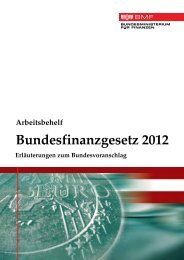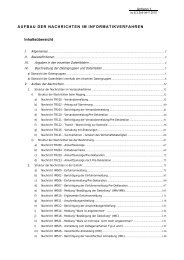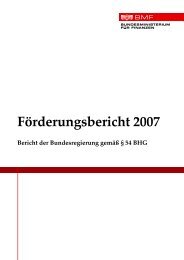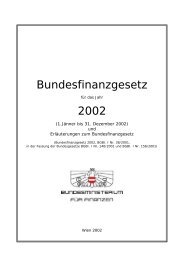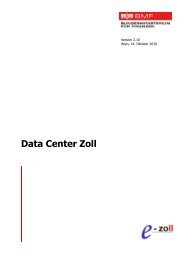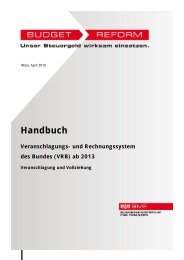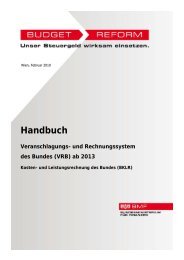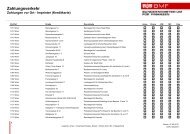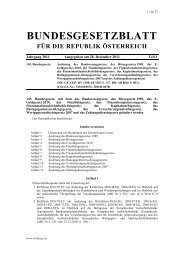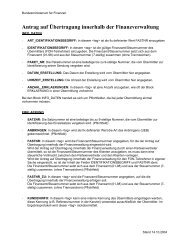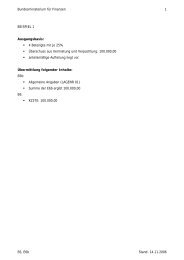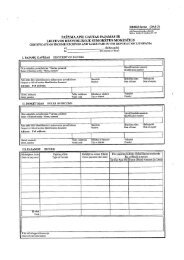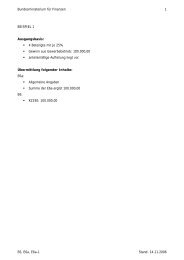Fallback and Recovery Specification (FRS)
Fallback and Recovery Specification (FRS)
Fallback and Recovery Specification (FRS)
Create successful ePaper yourself
Turn your PDF publications into a flip-book with our unique Google optimized e-Paper software.
DG TAXUD – EXCISE COMPUTERISATION PROJECT REF: ECP2-FITSDEV2-SC03-<strong>FRS</strong><br />
FALLBACK AND RECOVERY SPECIFICATION (<strong>FRS</strong>) VERSION: 3.11-EN<br />
Solution elements<br />
5.3.2 FB02: Revert to manual without subsequent input<br />
If an automated business process becomes unavailable, it is possible to carry out<br />
manually the equivalent operations. No subsequent data input is then required (no<br />
recovery needed). This is the case if the faulty process does not normally result in an<br />
update of the e-AAD, or if the lack of update is judged acceptable, from a business point<br />
of view.<br />
Example:<br />
If automatic risk assessment is unavailable, instead of waiting for the resources to<br />
recover, it is more efficient to exercise it manually.<br />
5.3.3 FB03: Revert to manual with subsequent input<br />
If an automated business process becomes unavailable (e.g. due to a software or a<br />
hardware failure or in case of scheduled unavailability for maintenance), the equivalent<br />
operations are first carried out manually.<br />
This is in particular the object of the paper fallback procedures described in Chapter 6.<br />
To ensure completeness of the EMCS processing, the st<strong>and</strong>ard electronic operations have<br />
then to be completed in deferred mode.<br />
Technically, the only difference between the normal submission <strong>and</strong> the deferred<br />
submission is the initial submission of an e-AAD. In all other cases, normal mode <strong>and</strong><br />
deferred mode are identical.<br />
Example:<br />
If submission of an e-AAD proves unavailable (although its availability requirement is<br />
permanent), the consignor ought to delay the electronic submission as much as possible.<br />
However, business constraints make that the actual dispatch of goods cannot be delayed.<br />
Consequently, the goods will have to leave before a valid e-AAD exists. A fallback AAD<br />
has then to be made to allow the goods moving under the cover of the Excise Number of<br />
the consignor plus the Local Reference Number of the consignment.<br />
It becomes then m<strong>and</strong>atory to submit the corresponding e-AAD as soon as the function<br />
becomes available again.<br />
5.3.4 FB04: No intervention – wait<br />
When an exception impacts business processes that are not critically time-dependent <strong>and</strong><br />
when the anticipated delay does not exceed the acceptable limit for the related functions,<br />
the normal response is to wait until the cause of the exception has been suppressed, <strong>and</strong><br />
the normal procedure can be used.<br />
The economic operator chooses to use this response any time the expected delay is<br />
judged acceptable, or if, for business reasons, regular EMCS procedures are preferred to<br />
fallback procedures.<br />
ECP2-FITSDEV2-SC03-<strong>FRS</strong>v3.11.doc Page 35 of 53



